How Do You Convert Watts to Amps
Understanding How to Convert Watts to Amps
When working with electrical systems, especially in home wiring, RV setups, solar power systems, or DIY electronics, one of the most essential conversions you’ll need to understand is how to convert Watts to Amps. This isn’t just an academic exercise—it’s critical for choosing the right wires, circuit breakers, and power supplies. In the first 100 words of this guide, we’ll break down why learning to convert Watts to Amps is more than just a numbers game—it’s about safety, performance, and efficiency.
Whether you're a seasoned electrician or a curious homeowner, understanding this conversion is vital. Let’s dive in.
- The Basics of Electrical Power: Starting with Watts to Amps
- Common Scenarios Where Watts to Amps Conversion Matters
- How to Convert Watts to Amps in Different Systems
- Tools and Calculators to Make Watts to Amps Easy
- Common Mistakes When Converting Watts to Amps
- Watts to Amps Conversion Chart and Reference Guide
- How Wire Size Relates to Watts to Amps Conversion
- Advanced Watts to Amps Calculations with Power Factor
- Watts to Amps in Renewable Energy Applications
- Common Devices and Their Typical Power Ratings
- Understanding Watts to Amps
The Basics of Electrical Power: Starting with Watts to Amps
Before we can effectively convert Watts to Amps, we need to understand the fundamental electrical terms. These include:
Watts (W): A measure of electrical power.
Amps (A): A measure of electrical current.
Volts (V): A measure of electrical potential or pressure.
These three are interconnected through Ohm’s Law and the Power Formula. The basic relationship is:
Amps = Watts / Volts
Let’s break this down further.
Why You Need to Convert Watts to Amps
If you’re installing a new appliance, upgrading a power system, or troubleshooting an existing circuit, you need to know how much current (in Amps) the system will draw. Using a value in Watts is helpful, but electrical infrastructure—like fuses, circuit breakers, and wires—depends on current. Knowing how to convert Watts to Amps ensures you’re operating safely and within system capacity.
>>See also Lifespan of a 48V Lithium Ion Battery in Golf Carts
Common Scenarios Where Watts to Amps Conversion Matters
Let’s explore real-world examples that show why converting Watts to Amps is necessary.
Home Appliance Ratings
Suppose you buy a space heater rated at 1500 Watts, and your household voltage is 120V. How many Amps will it draw?
1500W ÷ 120V = 12.5A
If your circuit is rated for only 15A, this heater is using 83% of the circuit’s total capacity—very important information to know.
Solar Power Systems
If you’re sizing components in a solar array, the panels and batteries are rated in Watts, but the charge controller and inverter might be rated in Amps. To ensure compatibility and prevent overloads, you must convert Watts to Amps based on your system’s voltage.
Car and RV Applications
Vehicle electrical systems typically run on 12V DC. If your device uses 240 Watts, how many Amps is that?
240W ÷ 12V = 20A
Without a proper fuse and wire gauge for 20 Amps, you risk overheating or damaging the wiring.
How to Convert Watts to Amps in Different Systems
AC (Alternating Current) vs DC (Direct Current)
DC Systems
Conversion is straightforward:
Amps = Watts ÷ Volts
This is the case with batteries, solar panels, or most RV power systems.
AC Systems
In AC systems, the formula becomes:
Amps = Watts ÷ (Volts × Power Factor)
The Power Factor (PF) accounts for inefficiencies in the system. In most residential systems with purely resistive loads like heaters or incandescent bulbs, PF is close to 1. But with devices like motors or fluorescent lights, PF might be 0.8 or lower.
Example:
If your device uses 1000W on a 120V circuit with a PF of 0.8:
Amps = 1000 ÷ (120 × 0.8) = 10.4A
This conversion shows how Watts to Amps isn’t always a direct division—context matters.
Tools and Calculators to Make Watts to Amps Easy
Manually converting Watts to Amps is simple enough with a calculator, but online tools make it faster and reduce human error. Here’s what to look for:
Input Voltage Selection: Ensure the tool allows DC and AC inputs.
Power Factor Adjustments: Needed for accurate AC calculations.
Auto Unit Conversion: Some calculators provide results in milliamps or kiloamps for large or small systems.
Also, mobile apps and smart home systems increasingly offer Watts to Amps calculators integrated into monitoring tools.
Common Mistakes When Converting Watts to Amps
Understanding the theory is one thing; applying it correctly is another. Here are pitfalls to avoid:
Ignoring Voltage Variability
In some regions, household voltage might range from 110V to 125V. If you calculate based on 120V and the actual voltage is 110V, your current draw will be higher than expected.
Overlooking Power Factor in AC Circuits
People often use Watts ÷ Volts blindly in AC circuits without adjusting for power factor, especially when dealing with motors and inductive loads. This can result in overloaded circuits and tripped breakers.
Not Verifying Rated Wattage
Some appliances list “maximum” or “typical” Watts. Always use maximum Wattage when doing safety-critical conversions.
Watts to Amps Conversion Chart and Reference Guide
One of the easiest ways to perform a quick Watts to Amps conversion is to use a ready-made chart. Below is a practical reference guide based on standard voltages and assuming a power factor of 1.0 (for simplicity):
|
Watts |
Voltage |
Amps |
|
60W |
120V |
0.5A |
|
100W |
120V |
0.83A |
|
500W |
120V |
4.17A |
|
1000W |
120V |
8.33A |
|
1500W |
120V |
12.5A |
|
2000W |
120V |
16.67A |
|
1000W |
240V |
4.17A |
|
2000W |
240V |
8.33A |
|
3000W |
240V |
12.5A |
This chart makes it clear how much current appliances draw at different voltages. It becomes especially helpful for RV owners, tiny house builders, or solar system designers who regularly work with both 12V and 120V systems and need to convert Watts to Amps quickly and reliably.
DC Conversion Chart
Here’s a quick snapshot for 12V systems commonly found in RVs and boats:
|
Watts |
Voltage (12V DC) |
Amps |
|
60W |
12V |
5A |
|
120W |
12V |
10A |
|
240W |
12V |
20A |
|
480W |
12V |
40A |
When designing systems using 12V batteries, you’ll quickly see how small increases in Watts require significantly higher Amps.
How Wire Size Relates to Watts to Amps Conversion
One of the most critical practical applications of converting Watts to Amps is selecting the right wire gauge. Every wire has a limit to how much current it can safely carry without overheating.
Ampacity Basics
The ampacity of a wire is the maximum amount of electrical current it can carry before its temperature exceeds safe levels. When you convert Watts to Amps, you get a current value that tells you what gauge (thickness) of wire is necessary.
Here’s a simplified version:
14 AWG wire: up to 15 Amps
12 AWG wire: up to 20 Amps
10 AWG wire: up to 30 Amps
Practical Example
If you have a solar panel rated at 300 Watts and you're using a 12V battery:
Amps = 300 ÷ 12 = 25 Amps
You’d need a 10 AWG wire or thicker to carry that current safely over a short distance.
Advanced Watts to Amps Calculations with Power Factor
When dealing with commercial or industrial AC systems, simply dividing Watts by Volts is not enough. You must account for the Power Factor (PF), which affects real-world efficiency.
What Is Power Factor?
Power Factor is the ratio between real power (Watts) and apparent power (Volt-Amps or VA). It ranges from 0 to 1.
Purely resistive loads (like heaters): PF ≈ 1.0
Inductive loads (motors, AC units): PF ≈ 0.7–0.95
Watts = Volts × Amps × Power Factor
To isolate Amps:
Amps = Watts ÷ (Volts × Power Factor)
Power Factor Example
A 1500W motor running on 240V with a PF of 0.85:
Amps = 1500 ÷ (240 × 0.85) ≈ 7.35A
This is significantly more accurate than using 1500 ÷ 240 = 6.25A, which would underestimate current and could lead to selecting an under-rated circuit breaker.
>>See also Choosing and Maintaining 36V Golf Cart Batteries Made Easy
Watts to Amps in Renewable Energy Applications
In solar, wind, and battery storage systems, converting Watts to Amps is an everyday necessity.
Solar Panels
A 400W solar panel at 24V:
Amps = 400 ÷ 24 = 16.67A
If you're connecting five such panels in parallel, total current would be over 83A—this informs the necessary wire gauge, controller rating, and fuse size.
Battery Banks
For a battery inverter drawing 1500W at 12V:
Amps = 1500 ÷ 12 = 125A
Now you can understand why 12V systems require very thick cables and large components, even for moderate power loads.
Common Devices and Their Typical Power Ratings
Here’s a list of everyday devices and their average wattage to help with your Watts to Amps calculations:
|
Device |
Typical Watts |
Voltage |
Amps (Approx.) |
|
Laptop Charger |
65W |
120V |
0.54A |
|
Refrigerator |
200W |
120V |
1.67A |
|
Microwave Oven |
1000W |
120V |
8.33A |
|
Hair Dryer |
1600W |
120V |
13.3A |
|
Space Heater |
1500W |
120V |
12.5A |
|
LED Lightbulb |
10W |
120V |
0.08A |
Use these numbers with the Watts to Amps formula to assess your power needs accurately.
Understanding Watts to Amps
Electrical safety and efficiency both start with good math. Understanding how to convert Watts to Amps isn’t just for engineers—it’s for anyone who installs, repairs, or uses electrical systems. Whether you're building a solar generator, wiring an RV, or just want to make sure your power strip isn’t overloaded, this knowledge gives you confidence and peace of mind.
Throughout this article, we've explored the formula, adjusted for AC and DC systems, discussed the impact of power factor, and applied these principles to real-world examples. From appliances to off-grid systems, the ability to convert Watts to Amps accurately is a foundational skill in modern energy use.
Remember: understanding how to convert Watts to Amps is a small calculation with big implications.

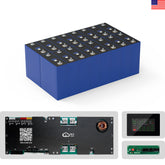

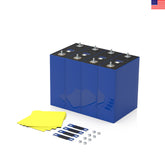

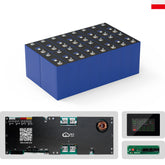

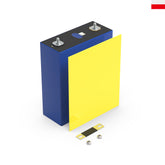

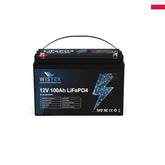
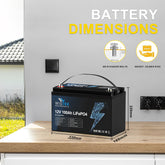


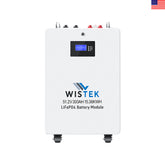
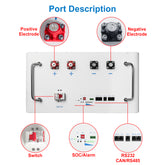
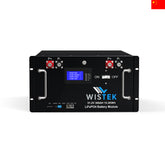
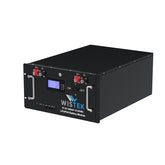


Leave a comment
All blog comments are checked prior to publishing